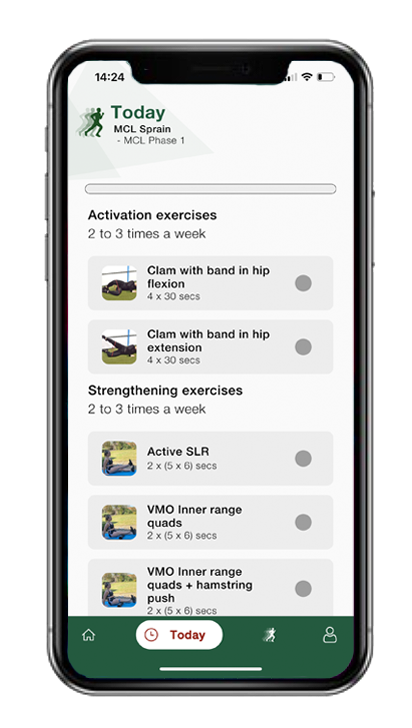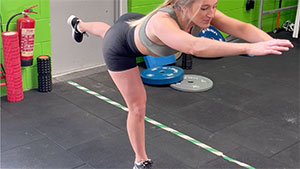Knee Rehabilitation Programs
Created by our elite-level sports physiotherapists, based on what they would do with their elite athletes but adapted for use by anyone.
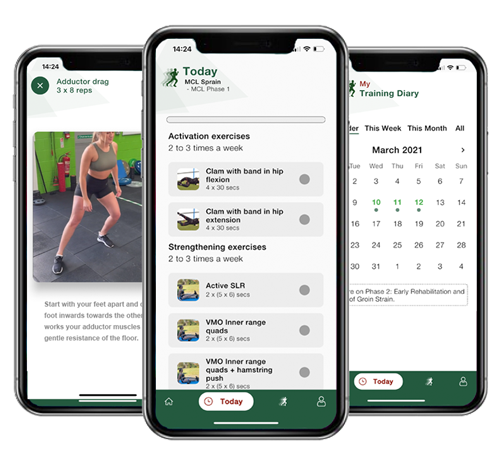
Start your knee rehabilitation now!
We have the following step-by-step knee rehabilitation programs for specific injuries. They have been created by our elite-level sports physios and are available online or via our injury rehab app.
Phases of knee rehabilitation

Knee rehabilitation varies depending on the injury and you as an individual. However, they generally follow the progression outlined below.
Our knee rehabilitation programs usually break down into 4 phases with a 5th injury ‘mitigation/prevention’ phase. Because every injury is different and every athlete is different our programs are criteria-based rather than timeline.
This means you have to reach specific criteria or milestones rather than a period of time before moving on to the next phase.
Phase 1
This is the acute phase and begins as soon as possible after injury. The main aim here is to reduce pain and swelling and allow your body to heal. Applying the PRICE principles of protection, rest, ice compression, and elevation is most important.
Even though you might be injured there are always exercises you can do in phase 1 which will speed up your recovery later and keep you in a training routine.
Seek professional advice and get an accurate diagnosis of your injury. This is not always possible for knee joint injuries if you have a lot of swelling. Your doctor or physio may want to wait until the swelling has gone down so they can perform accurate knee assessment tests.
By the end of phase one, you should have minimal swelling and be able to walk virtually pain-free.
Phase 2
By now you should be aiming to improve the range of movement of the joint. You will also begin to increase the ability of your knee to take load but in a controlled environment.
Here we would introduce some exercises involving functional movement patterns using mainly body weight.
Phase 3
The aim of phase 3 is to prepare your knee to withstand heavier loads throughout the full range of movement. Here we also like to introduce dynamic loading rehabilitation exercises such as hopping and jumping.
You should be aiming to run at up to 50% maximum speed. However, it is still important to protect your injury as the healing process is not yet complete.
Phase 4
Phase 4 prepares you to return to your normal sport or activity safely to perform at your best with confidence. This confidence will be born out of completing more demanding exercises with heavier loads, unpredictable movements, changes of direction, and agility all performed under pressure and fatigue.
Phase 5
Often we include a 5th maintenance phase to help mitigate the risk of re-injury. Although you should by now be back to full fitness (perhaps even stronger than before), you should still monitor your knee and integrate knee rehabilitation exercises into your normal training. You cannot ever prevent injury, but you can mitigate the risk.
Types of knee rehab exercises
Knee rehabilitation is not just about strengthening your knee and the muscles around it. Our approach is to condition and work on other parts of the body as well. We use the following types of exercises:
Mobility
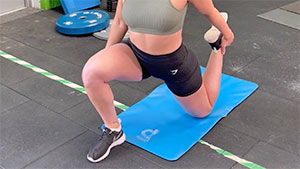
These exercises aim to maintain or regain full range of movement in your knee. If you have a ligament or joint injury or significant joint swelling then your mobility is likely to be restricted.
Strengthening
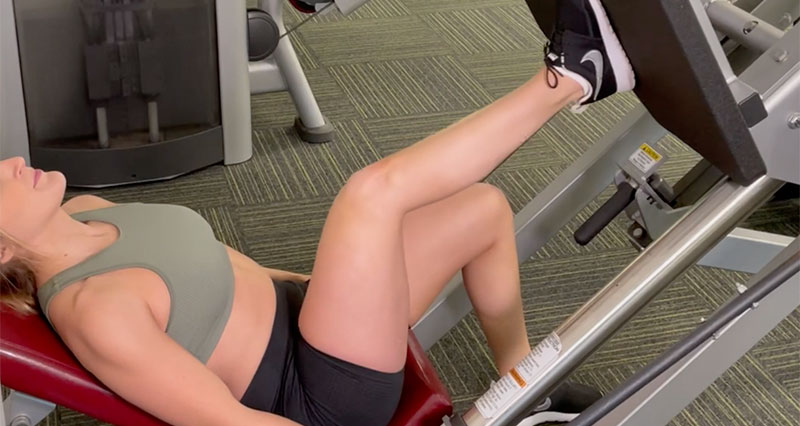
These form the main part of any knee rehabilitation or strengthening program. They strengthen the quadriceps muscles at the front of the thigh, as well as what we call the posterior chain (hamstrings & gluteal muscles).
Activation
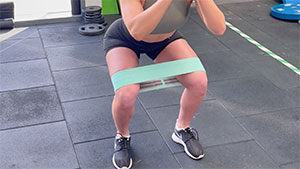
These exercises are all about keeping muscles firing and working properly, particularly the hip muscles. This is often overlooked with knee rehabilitation. If you have to rest for a period of time then they can ‘go to sleep’ and lose strength, leading to a slower recovery, or poor performance later when you get back to full fitness.
Functional knee rehab exercises
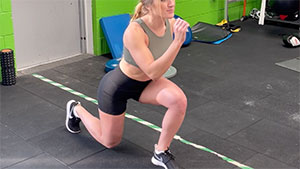
These are activity or sports-specific exercises and include more complex exercises and agility drills but in a controlled environment. They bridge the gap between basic knee strengthening exercises and returning to more sports-specific training.
Conditioning
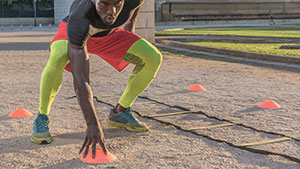
These are all about maintaining general fitness as much as possible. In the early stages of rehabilitation, this might be arm-only swimming or concentrating on your upper body strength in the gym. Later on, running progressions involving acceleration runs, agility and intervals are included.
Q Angle of the knee & VMO exercises
The Q angle of the knee is a measurement of the angle between the quadriceps muscles and the patella tendon. It provides useful information about the alignment of the knee joint.
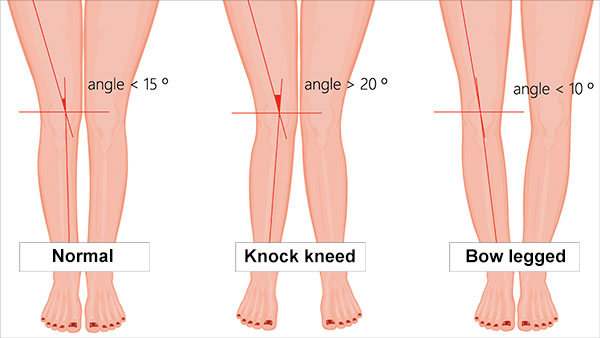
VMO strengthening is one of the most important knee rehab exercises.
This is especially relevant with overuse injuries such as Patellofemoral pain, Patella tendonitis, or Osgood Schlatter disease.
With many sports injuries affecting the legs, one of the first muscles to waste away is the Vastus medialis muscle on the inside of the thigh.
It plays an important part in the position and tracking of the patella or kneecap.
